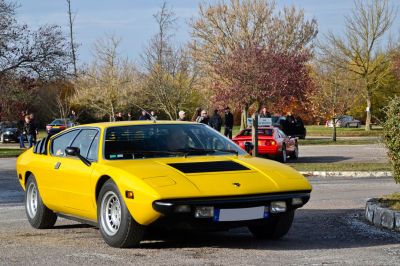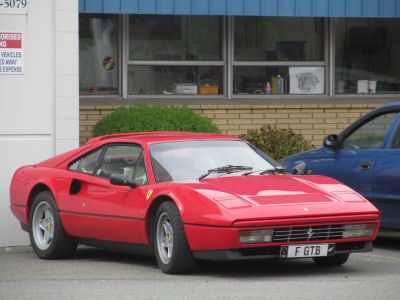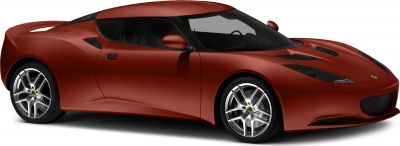 1974 Ferrari Dino GT4 (208/308) Dimensions, Size & Specs
1974 Ferrari Dino GT4 (208/308) Dimensions, Size & SpecsMeasurements of the 1974 Ferrari Dino GT4, engineered for optimal performance and comfort
| Dimensions | |
|---|---|
| Length: | 4300 mm169.3 in14.1 ft |
| Width: | 1800 mm70.9 in5.9 ft |
| Height: | 1180 mm46.5 in3.9 ft |
| Weight Specifications | |
| Curb Weight: | 1150 kg2535 lbs |
| Tire Specifications | |
| Tire Sizes: |
|
The Ferrari Dino GT4 (208/308), produced from 1973 to 1980, represents Ferrari's innovative foray into mid-engine sports coupes during the 1970s. This model is notable for its sharp wedge-shaped design and practical 2+2 seating layout, which was a departure from Ferrari's typical two-seater sports cars of the era. Measuring 4300 mm (169.3 inches) in length, 1800 mm (70.9 inches) in width, and 1180 mm (46.5 inches) in height, the Dino GT4 exhibits compact yet aggressive proportions suited for dynamic handling and sporty aesthetics. Weighing a relatively light 1150 kg (2535 lbs), it offers a nimble driving experience backed by balanced weight distribution thanks to its mid-engine placement. The tire sizing of 195/70 R14 at the front and 205/70 R14 at the rear complements the car’s performance-oriented suspension setup, ensuring good grip and road feedback. The 208 variant was equipped with a V8 engine of smaller displacement targeted for specific markets, while the 308 version featured a larger 3.0-liter V8 producing stronger performance figures. The Ferrari Dino GT4 stands out in Ferrari's history as the first model to use a V8 engine and a 2+2 layout, bridging the gap between pure sports cars and grand touring with an emphasis on everyday usability without sacrificing Ferrari’s signature flair and driving excitement. This model remains a beloved classic for enthusiasts seeking a vintage Ferrari with unique styling and a well-balanced chassis.
Discover the standout features that make the 1974 Ferrari Dino GT4 a leader in its class
Have a question? Please check our knowledgebase first.
The Ferrari Dino GT4 (208/308), produced between 1973 and 1980, has a length of 4300 mm (169.3 inches), a width of 1800 mm (70.9 inches), and a height of 1180 mm (46.5 inches). These dimensions give the car a sporty yet compact profile, typical of classic mid-70s Italian coupes. Its relatively low height contributes to its sleek aerodynamic shape and sporty stance, while the width provides stability on the road.
The Ferrari Dino GT4 has a curb weight of approximately 1150 kg (2535 lbs). This relatively light weight for a mid-engine V8 coupe enhances its agility and responsiveness, making it a nimble sports car for its era. The light curb weight contributes to better acceleration, handling, and braking performance. Combined with its balanced 2+2 seating configuration, this weight strikes a good compromise between performance and practicality.
The Ferrari Dino GT4 (208/308) comes equipped with tire sizes 195/70 R14 on the front and 205/70 R14 on the rear. These tire sizes reflect the car’s 14-inch wheels, common during the 1970s, balanced for both grip and comfort. The slightly wider rear tires (205 mm) help provide improved traction, especially given the mid-engine layout that shifts weight to the rear. Overall, these tires complement the car’s sporty handling characteristics and road-holding capabilities.
Yes, the Ferrari Dino GT4's compact dimensions — 4300 mm (169.3 inches) in length, 1800 mm (70.9 inches) width, and 1180 mm (46.5 inches) height — mean it fits comfortably within a standard domestic garage. Most typical garages have a length of at least 5 meters (196 inches) and a width of around 2.5 meters (98 inches), which provide ample space not only for parking but also for maneuvering around the car. Its relatively low height also means garage clearance is rarely an issue.
Compared to the predecessor Dino 246 GT and GTS, the Dino GT4 (208/308) is notably different in size. The 246 GT measured about 4325 mm (170.3 inches) in length, so the GT4 is slightly shorter at 4300 mm (169.3 inches). Widthwise, the GT4 at 1800 mm (70.9 inches) is somewhat wider, offering a roomier cabin experience. Its height of 1180 mm (46.5 inches) is roughly comparable. The GT4 also introduced a 2+2 seating arrangement, making it more practical than the strict two-seater 246, which reflects the slight increase in interior space utilization despite similar external dimensions.
When compared to contemporary sports coupes of the mid-1970s, such as the Porsche 911 and Lamborghini Urraco, the Ferrari Dino GT4 holds its own as a relatively compact but spacious 2+2. The Porsche 911 of that era was approximately 4324 mm (170.2 inches) long and about 1660 mm (65.4 inches) wide, making the Dino GT4 slightly more substantial in width. The Lamborghini Urraco was about 4325 mm (170.3 inches) long and around 1780 mm (70.1 inches) wide, quite similar to the Dino in footprint. The Dino GT4 distinguished itself with a low height of 1180 mm (46.5 inches) compared to these rivals, emphasizing its sleekness and mid-engine design.
The Ferrari Dino GT4's exterior design reflects its dimensions with clean, angular lines—a departure from the curvaceous styling of its predecessors. Its 4300 mm length and 1800 mm width provide a solid base for its wedge-shaped profile, emphasized by a low height of just 1180 mm. This low and wide stance enhances aerodynamic efficiency and sporty appeal. The design incorporates proportions balanced for performance and elegance, including pop-up headlights and a distinctive rear hatchlight that showcases the mid-engine layout while maintaining coupe compactness.
The Ferrari Dino GT4 features a 2+2 seating layout, which is somewhat unique among mid-engine sports cars of the time. Despite its 4300 mm length and relatively compact external dimensions, the interior is intelligently packaged to accommodate four passengers. The rear seats are best suited for smaller adults or children due to limited legroom, which is typical for 2+2 coupes. Nevertheless, the wider width of 1800 mm provides reasonable shoulder room, making the car more practical for everyday use compared to two-seater sports cars.
The Ferrari Dino GT4 came with V8 engines, varying by model: the 208 GT4 was powered by a 2.0-liter V8 producing around 170 horsepower, while the 308 GT4 featured a larger 3.0-liter V8 delivering approximately 255 horsepower. These engines, paired with a five-speed manual transmission, offered lively performance for the era, with the 308 GT4 capable of 0-100 km/h (0-62 mph) in just over 6 seconds. Combined with its mid-engine layout and balanced dimensions, the Dino GT4 provided excellent handling, making it a compelling and driver-focused grand tourer.
Despite its compact dimensions and mid-engine layout, the Ferrari Dino GT4 offers practical luggage capacity, which is quite notable for a sports coupe from the 1970s. The rear hatch provides access to a modest cargo area, useful for everyday luggage or weekend trips. While it cannot compete with larger grand tourers or sedans in outright cargo space, the well-thought-out packaging, combined with 2+2 seating, makes the Dino GT4 more versatile than many mid-engine cars of its time. This practicality adds to its appeal as a grand touring Ferrari.
Discover similar sized cars.

| Production: | 1972-1981 |
|---|---|
| Model Year: | 1972 |
| Length: | 4250 mm167.3 in |
| Width: | 1760 mm69.3 in |
| Height: | 1115-1160 mm43.9-45.7 in |

| Production: | 1985-1989 |
|---|---|
| Model Year: | 1986 |
| Length: | 4255 mm167.5 in |
| Width: | 1730 mm68.1 in |
| Height: | 1128 mm44.4 in |

| Production: | 2009-2015 |
|---|---|
| Model Year: | 2010 |
| Length: | 4350 mm171.3 in |
| Width: | 1972 mm77.6 in |
| Height: | 1229 mm48.4 in |
